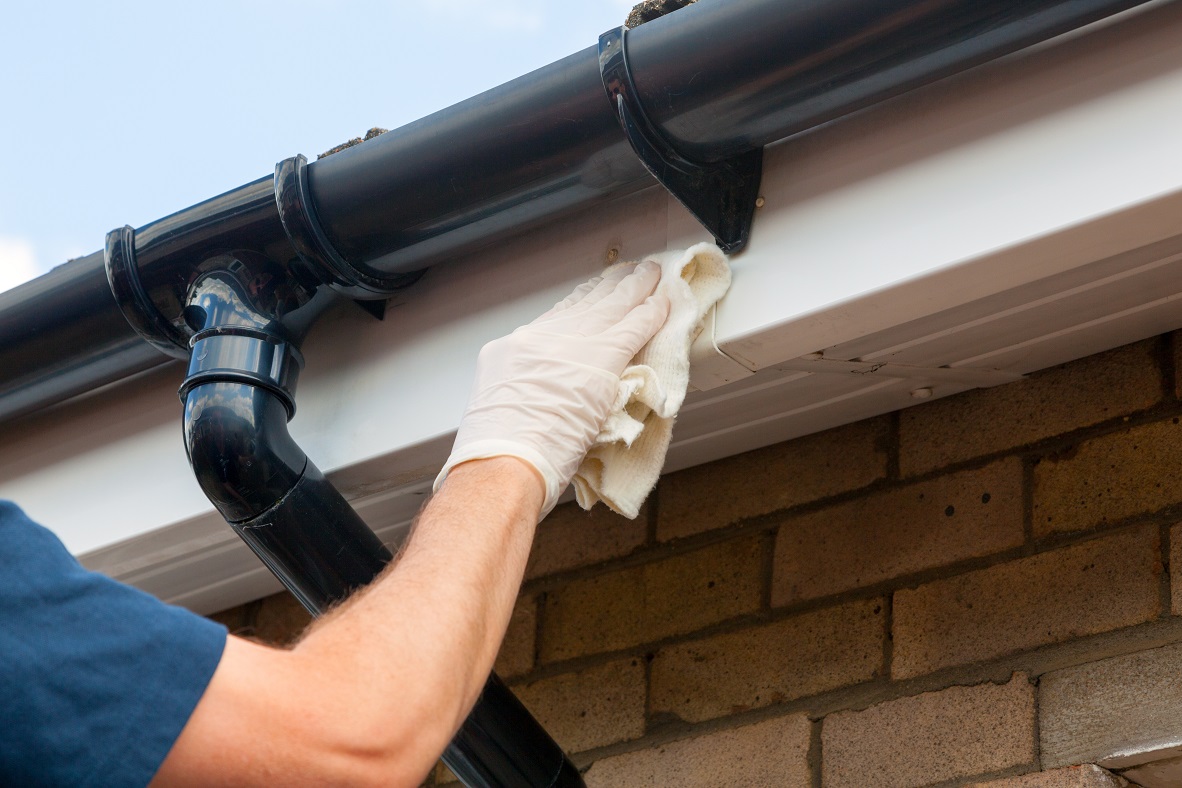
Concrete Gutters are known to be a failing system. Over their lifetime they can present several issues for homeowners. These issues include cold/ thermal bridging, sagging & uneven tone, dampness, mould to occur and many more.
Why were Concrete Gutters built?
Concrete gutters were built on homes between the 1950s to 1970s. They were the substitute for iron gutters, due to steel shortages at the time. However, over time Concrete gutters became popular, and many homes in the UK had them installed or were installing them. Similarly, cavity constructed walls were increasing and concrete gutters worked well and efficiently with them, making them a necessity to own.
Nevertheless, Concrete gutters were doomed from the outset with their design, as it was formed in individual blocks. Creating many problems for homeowners. Concrete gutters are porous, this means they can hold water for an extended time which is the opposite of what gutters are supposed to do.
Why is uPVC Guttering Better?
In the UK, uPVC Guttering is becoming a popular choice for homeowners, this is because it can be used for window frames. They also add value to your property because people can see the uPVC gutters are in good condition. In newer homes, developers use uPVC guttering on the final design of the home, because they are cleaner and can be maintained easily.
The UK is known for its weather, and this is the reason many gutters fail. Many homeowners choose uPVC guttering because they can withstand the weather without breaking and have many other benefits compared to various other gutters.
Low Maintenance & Durable - uPVC gutters are made from moulded plastics which makes them naturally strong and is the reason why many homes use them as doors and windows.
Once the uPVC gutters have been installed, they require low maintenance procedures because they do not rust and can be cleaned easily. Unlike other guttering systems, uPVC gutters show fewer scratches and dents.
Lightweight and Convenient – Compared to other guttering systems, uPVC gutters are easier and lighter to move which means scaffolders can move quickly and efficiently up and down their ladder.
Gutters like uPVC, make the installation process quicker and safer. The also has environmental benefits. Since they are lighter, workers can carry multiple at a time which improves the Carbon Footprint.
Flexible – Because uPVC is made from plastic, it can be moulded into any shape or size easily, thus, making it an easier material to work with.
Since they are made from plastic, there is no paint needed and the white colour matches with homes easily. Lastly, because they are made from plastic, they are easier to install as they can simply snap together into place.
The problems with Concrete Gutters
Lining Failure – This occurs because of the expansion and contraction of the lining changes in temperature. The thermal changes can point to the separation of weaker points in the structure, which can cause the concrete to crack and create access points for the water that can be impossible to find the source of where it has started. When lining failure occurs this should be addressed quickly as this can have negative impacts on the homeowner’s interior and exterior home. In the long term, the best solution is to replace the concrete gutters.
Cold/ Thermal Bridging – Cold bridging is when the colder material meets the warmer material thus, causing the warmer material to cool down. During winter times this can have negative impacts on the homeowner on how their home insulates. This also affects the interior of the homeowner’s house because the wallpapers over time will peel away from the top.
Sagging and Uneven Gutters – Concrete gutters can act as effective door and window opening and closing joints. But when not done professionally they began to sag. Sagging is the result of badly replaced windows, which become harder to open and close.
Dampness and Mould – When the water remains in the concrete gutters it can cause leakages which often leads to dampness and mould to accumulate. Dampness can be hazardous for the homeowner’s health
.
The Guttering has no Pitch – Once water builds up in concrete gutters, this causes a fall allowing water to have a consistent flow towards a downpipe.
Unfortunately, one of the biggest issues with this water is that it can’t travel to a downpipe unaided. This leaves considerable amounts of residual water sitting in the guttering that can be blown up under the roof tiles and in through the cavity wall.
The residual water sitting in the Finlock concrete guttering also causes the concrete to wear away and ultimately causes the concrete gutters to become more porous and the cement between blocks to erode causing leaks externally on the external walls.

































